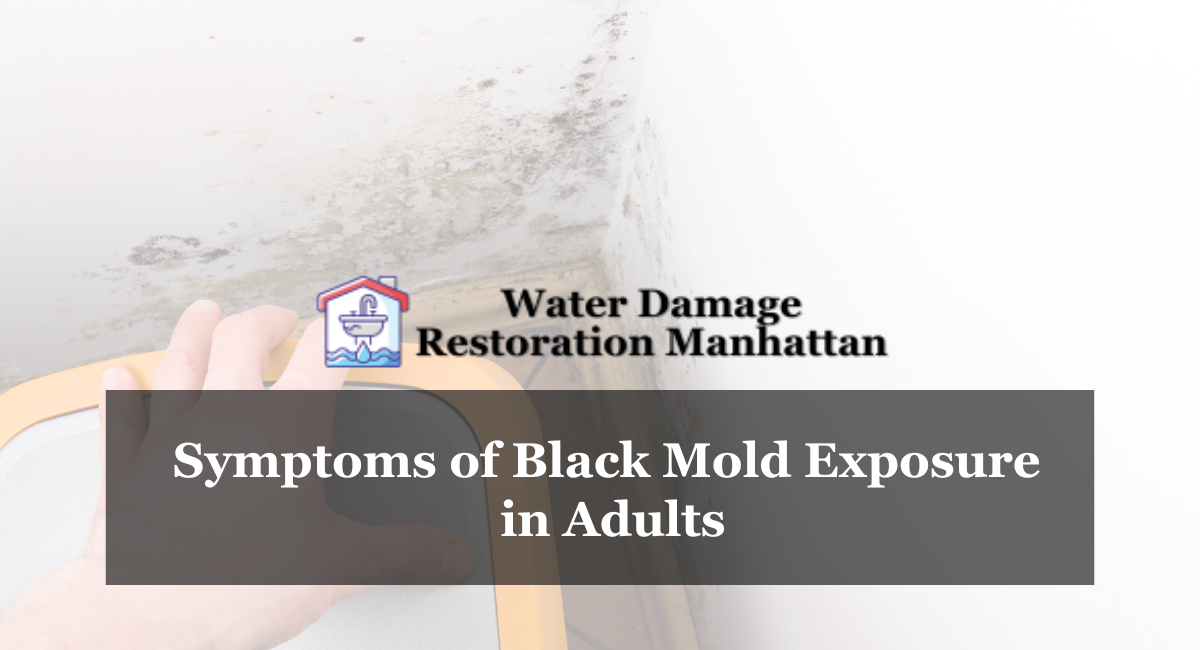Black mold. The name itself conjures images of dark, damp places and a sense of unease. But beyond the creepy factor, black mold exposure can pose a real health risk.
While not everyone who comes in contact with black mold will experience problems, it’s important to be aware of the symptoms and take action if you suspect exposure.
What is Black Mold?
First, let’s clear up a common misconception: “black mold” isn’t a single type of mold. It’s a term used to describe several different species of mold that appear dark green or black in color.
These molds thrive in damp environments and can grow on a variety of surfaces, including walls, ceilings, floors, and even furniture.
How Can You Be Exposed to Black Mold?
Black mold spores, tiny reproductive particles, are released into the air and can be inhaled.
This can happen if black mold is growing in your home or workplace, or even if you’re exposed to it outdoors in areas with excessive moisture.
Who is Most at Risk?
While anyone can experience health problems from black mold exposure, some people are more susceptible than others. This includes:
- Individuals with Allergies or Asthma: People with pre-existing respiratory conditions are more likely to experience problems from mold exposure, as it can irritate the airways and trigger allergy symptoms.
- Children and Infants: Children have developing respiratory systems and are more vulnerable to the effects of mold exposure.
- People with Weakened Immune Systems: Those with compromised immune systems, due to illness or medication, may have a harder time fighting off mold-related infections.
Symptoms of Black Mold Exposure
The symptoms of black mold exposure can vary depending on the individual and the severity of the exposure.
Some people might not experience any symptoms at all, while others may develop a range of issues. Here’s a breakdown of some common symptoms to watch out for:
- Respiratory Problems: These are some of the most common symptoms of black mold exposure. You might experience coughing, sneezing, wheezing, shortness of breath, or a stuffy or runny nose.
- Skin Irritation: Mold exposure can cause itchy, red, or irritated skin, especially on areas that come into direct contact with mold spores.
- Eye Irritation: Symptoms like watery, red, or itchy eyes can also occur after exposure to black mold.
- Sinus Issues: Headaches, facial pain, and congestion are common signs of sinus problems that can be triggered by mold exposure.
- Fatigue and Flu-like Symptoms: Feeling tired, achy, or run down for no apparent reason could be a sign of mold exposure.
It’s important to note that these symptoms can also be caused by other allergies or illnesses. If you’re experiencing any of these issues and suspect black mold exposure might be the culprit, it’s crucial to consult a doctor to get a proper diagnosis.
Reducing Your Risk of Black Mold Exposure
The best way to deal with black mold is to prevent it from growing in the first place. Here are some tips to reduce your risk of exposure:
- Control Moisture Levels: Mold thrives in damp environments. Aim to keep the humidity level in your home between 30% and 50% by using exhaust fans in bathrooms and kitchens, and venting dryers properly to the outdoors.
- Fix Leaks Promptly: Address any leaks in your roof, pipes, or appliances promptly to prevent moisture build-up.
- Increase Ventilation: Ensure proper ventilation in your home, especially in areas prone to moisture like basements and bathrooms. Open windows regularly and consider using dehumidifiers in damp areas.
- Clean Up Spills Quickly: Don’t let spills sit and become breeding grounds for mold. Clean up spills promptly and dry the affected area thoroughly.
- Inspect Regularly: Be proactive! Regularly inspect your home for signs of mold growth, especially in areas with high moisture levels. Look for discoloration on walls, ceilings, or floors, and musty odors.
If You Suspect Black Mold
If you discover black mold growth in your home, here’s what to do:
- Minimize Exposure: Avoid the affected area as much as possible, especially if you have respiratory problems or allergies.
- Identify the Source: Try to find the source of the moisture problem that’s allowing the mold to grow.
- Consider Professional Help: For extensive mold growth or if you’re unsure how to proceed, consider hiring a professional mold remediation company. They have the expertise and equipment to safely remove mold and address the underlying moisture issue.
Conclusion: Knowledge is Power
Black mold exposure can be a concern, but by being aware of the risks and
taking preventative measures, you can significantly reduce your chances of experiencing health problems. Remember, a healthy home starts with a dry and mold-free environment.
Here are some additional points to consider:
- Don’t Panic: While black mold can be a health hazard, it’s important not to panic if you discover some in your home. Small amounts of mold growth can often be safely addressed by homeowners themselves.
- Consult a Doctor: If you’re experiencing symptoms that you suspect might be related to black mold exposure, schedule an appointment with your doctor. They can help determine the cause of your symptoms and recommend appropriate treatment.
- Focus on Prevention: The best approach to black mold is to prevent it from growing in the first place. By maintaining a clean, dry, and well-ventilated home, you can create a less hospitable environment for mold spores to thrive.
- Be Wary of Scams: Unfortunately, some companies prey on homeowners’ fears by offering unnecessary or overpriced mold remediation services. Always do your research and get quotes from multiple reputable companies before hiring someone to address a mold problem.
By following these tips and staying informed, you can take control of your indoor environment and create a healthy and comfortable home for yourself and your family.
